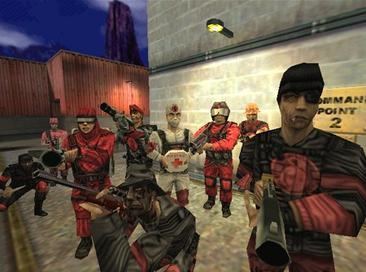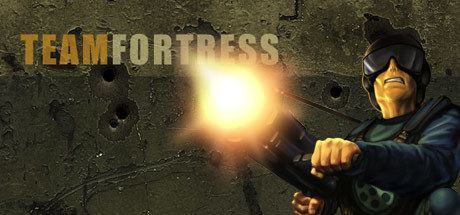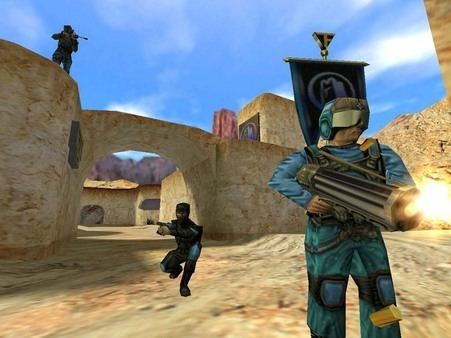9.2 /10 1 Votes9.2
9.3/10 ModDB | 9/10 Steam Series Team Fortress[*] Initial release date 7 April 1999 | |||||||||||||||||||||||||||||||||
 | ||||||||||||||||||||||||||||||||||
Publisher(s) Sierra StudiosValve Corporation (digital) Similar Valve Corporation games, First-person shooter games | ||||||||||||||||||||||||||||||||||
Team fortress classic dustbowl spy gameplay part 1
Team Fortress Classic is a team-based online multiplayer first-person shooter video game developed and released by Valve in 1999. Based on the 1996 Quake modification Team Fortress, the title was ported to Valve's GoldSrc engine as a way of promoting Half-Life's software development kit.
Contents
- Team fortress classic dustbowl spy gameplay part 1
- Team fortress classic dustbowl engineer gameplay part 1
- Gameplay
- Classes
- Development
- Reception
- Legacy
- References

Matches in Team Fortress Classic pit two teams against each other, with each team member having access to nine distinct classes. Competition takes place in a variety of scenarios, usually capture the flag, VIP protection, or territorial control. Since its release, the game has undergone significant upgrades to player models and game modes.

Team fortress classic dustbowl engineer gameplay part 1
Gameplay

Matches in Team Fortress Classic feature two teams, one red and one blue, and nine playable character classes. Each character class has a set of weapons and abilities unique to that class. This differentiation between classes makes for rock-paper-scissors-esque gameplay that requires teammates to work together in order to effectively achieve objectives. The class-system also encourages players to vary their selection of classes and utilize certain classes in conjunction with one another to gain the advantage.
In Team Fortress Classic, a server can hold up to 32 players simultaneously, and matches can be played in a number of game modes, each featuring different objectives.
Classes
In Team Fortress Classic, a player can choose to play as one of nine standard classes: the Scout, Soldier, Pyro, Demoman, Heavy, Engineer, Medic, Sniper, and Spy. Each class comes equipped with at least one weapon unique to that class, and often a secondary weapon which may be common across multiple classes (typically a shotgun or nailgun). Additionally, each class gets a melee weapon (all classes but the Medic, Spy and Engineer wield a crowbar, a homage to Valve's game Half-Life). Finally, each player carries grenades; the effects of grenades vary, depending on the player's class.
In Escort game modes, a player may also choose to play as the Civilian class, which is armed only with an umbrella, no armor and very little health. Civilians are typically escorted and protected by the rest of the team.
The Scout is the fastest class in the game, but is unable to deal much damage in return. The Scout is armed with a nailgun as well as being able to use caltrops and concussion grenades to slow down and confuse opponents. The Sniper class is armed with a high-powered sniper rifle, and can be used to attack enemies from distant positions. The Soldier class is significantly slower than Snipers and Scouts, but possesses better armor and is armed with a rocket launcher that allows him to rocket jump, along with combat shotguns as sidearms for backup. Rocket jumping, while effective for moving about the battlefield, also significantly damages the soldier. Soldiers can also make use of nail bombs to cause more damage within close quarters. The Demoman class is armed with a grenade launcher for indirect fire onto enemy positions, and a Pipe Bomb launcher for booby trapping places as well as being equipped with a demolition pack capable of opening or closing certain routes on some levels.
The Medic class is equipped with a super nail gun, concussion grenades and a medical kit that can be used either to heal teammates or expose opponents to a contagious infection that drains health. The Heavy Weapons class is armed with a powerful minigun, and can sustain more damage than any other class. However, the Heavy is significantly slower than other classes. The Pyro Class is equipped with a flamethrower and an incendiary rocket launcher, both of which can set enemies on fire. Pyros also carry several napalm grenades for the same purpose. The Spy class differs significantly in style from other classes, as he can disguise himself to look like any other class on either side. The Spy is equipped with a knife to kill enemy players in one hit by stabbing them in the back as well as a tranquilizer gun to slow down opponents and hallucination gas to confuse them. Spies also possess the ability to feign death, allowing them to use their backstab ability more effectively. The Engineer class builds structures to support their team, such as sentry guns to defend key points, ammunition dispensers and teleporters. Engineers have the ability to replenish a teammates armour by tapping them with their spanner. In addition, the Engineer is armed with EMP grenades that detonates any explosive ammunition within its range, as well as a shotgun for backup.
Development
Team Fortress was originally a 1996 Quake, and then QuakeWorld modification developed by TF Software Pty. Ltd. Its developers were working on a follow up stand-alone version that they planned to call Team Fortress 2 when the team was hired by Valve Corporation to write a port of Team Fortress as a mod for Valve's game Half-Life. The mod was released as Team Fortress Classic by Valve in April 1999.
Valve significantly updated the game over time, tweaking the game's networking code, and adding new maps and game modes. In 2003, Team Fortress Classic was released as a stand-alone game on Valve's Steam system. Versions of the game for OS X and Linux were released in 2013.
Reception
Team Fortress Classic has an 85.43% on GameRankings.
In 2010, the game was included as one of the titles in the book 1001 Video Games You Must Play Before You Die.
Legacy
Following the success of Team Fortress as a Quake modification, Team Fortress Software began development of a sequel. Interested in the project's potential, Valve Corporation hired the team to develop Team Fortress 2 on the modified Quake engine utilized by Half-Life. The partnership was announced in 1998, developed in parallel to Team Fortress Classic. However, the game was not shown publicly until a year later at E3 1999. Introduced as Team Fortress 2: Brotherhood of Arms, the game showcased multiple unprecedented technologies for its time and won several awards including "Best Online Game" and "Best Action Game". In June 2000, Valve announced that Team Fortress 2 had been delayed further, attributing this to their rebuilding of the game on a new, proprietary in-house engine that is today known as the Source engine.
Following this delay, little mention of the game was made by Valve for a period of six years. Running up to Half-Life 2's release in 2004, Valve's Doug Lombardi claimed that Team Fortress 2 was still being developed and news of its release would come after that of Half-Life 2. However, Lombardi's claim would not come to fruition until Electronic Arts' 2006 Summer Showcase. For the first time in more than half a decade, the title was shown publicly with an art style that notably contrasted its revisions prior. In 2007, Team Fortress 2 was released to critical acclaim as part of The Orange Box.
The plot of Team Fortress 2 is progressed outside of the game itself, usually in the form of short videos or comics. In April 2014, Valve introduced the Team Fortress Classic mercenaries, excluding their respective Medic, into the plot of Team Fortress 2. A catch-up comic released on the TF2 website released for free comic book day revealed that Team Fortress Classic is set in alternate 1930, and that the game takes place during the gravel wars era of the timeline, along with the fact that the classic engineer is the father of the engineer in Team Fortress 2.
